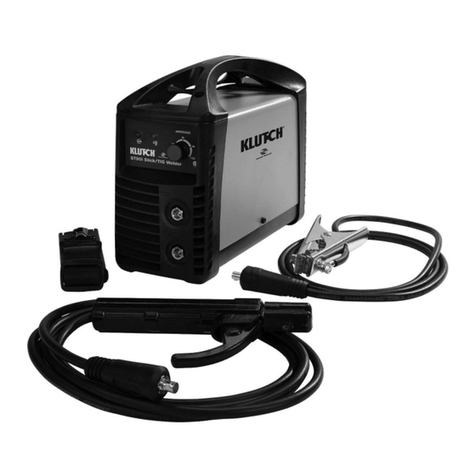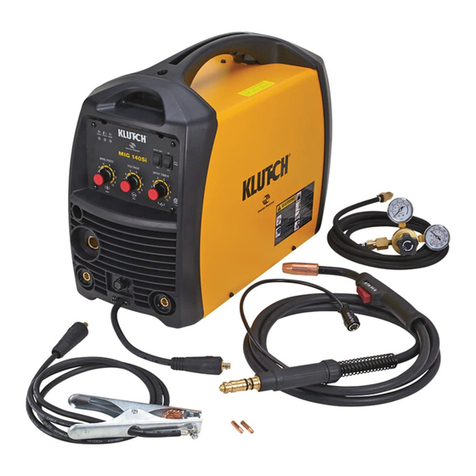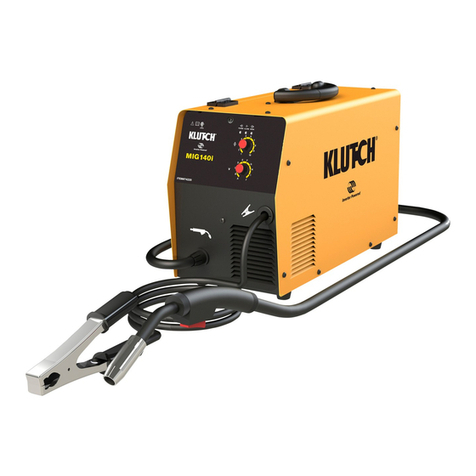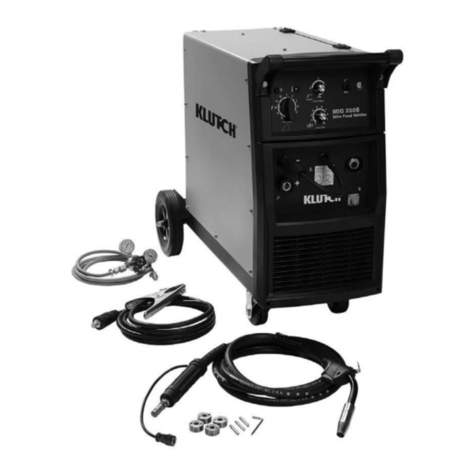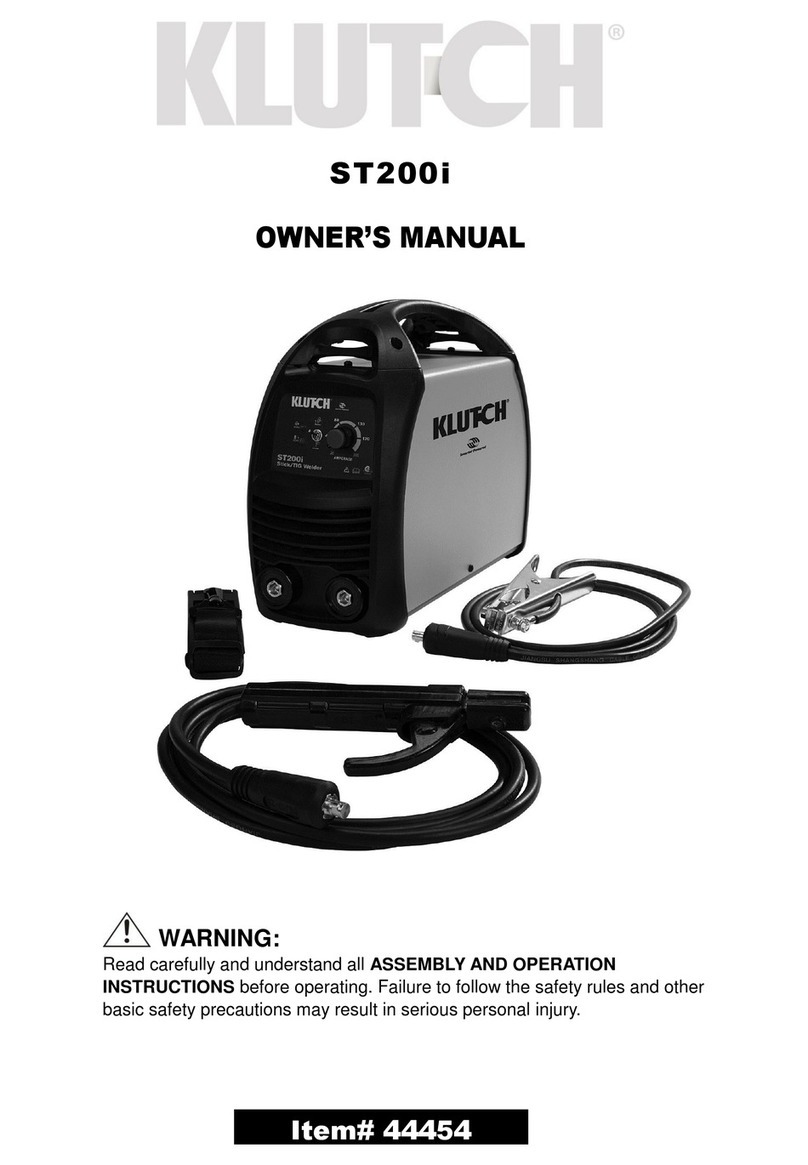
Page 4 of 33
Intended Use
The Klutch MIG180SG is an inverter-powered, 230V welder with spool gun designed for MIG
welding aluminum and other MIG and flux cored wires. The wire feed system is the spoolgun and
can accommodate a variety of welding wires that are available on 4 inch spools. It comes complete
with a regulator and gas hose for easy connection for MIG welding. Connect this unit to a 230V
NEMA 6-50R receptacle for input power. It is designed to weld materials as thin as 24 gauge all the
way up to 1/4" in a single pass.
Welding with flux core wire gives the operator the flexibility to use this wire feed welder for mobile
applications, including outdoor applications. Flux core wire does not require the use of a separate
shielding gas which can be blown away by the wind in other applications. Since flux core welding
does not use shielding gas, the operator will not have to have shielding gas bottles, or use the
regulator and gas hose.
Welding with an MIG wire does require the use a bottle of shielding gas. See the Setting-Up
Equipment section for recommendations on shielding gas based on the material you are welding.
MIG welding is limited to indoor applications or applications where the influence of wind can be
controlled to prevent shielding gas from blowing away. MIG welding allows you to weld thinner
materials without burn-through. It also creates a much cleaner weld with less spatter and no slag.
The result is little post-weld cleaning of the weld joint.
This unit is intended to be used on a 50 amp 230V AC circuit without the use of an extension cord.
If an extension cord is necessary for your application, use the appropriate size and length of
extension cord that will handle 50 amps the entire length of the extension. We highly recommend
talking with a qualified electrician for cord size recommendations.
High frequency, inverter-based welding is more efficient and provides better control than non-
inverter welding machines.
Accessories Included:
(1) Welding cart
(1) 10.5 ft. Spoolgun
(1) 6.5 ft. Ground cable/clamp
(1) Dual gauge regulator
(1) 10 ft. Gas hose
(2) 0.030 in. Contact tips






